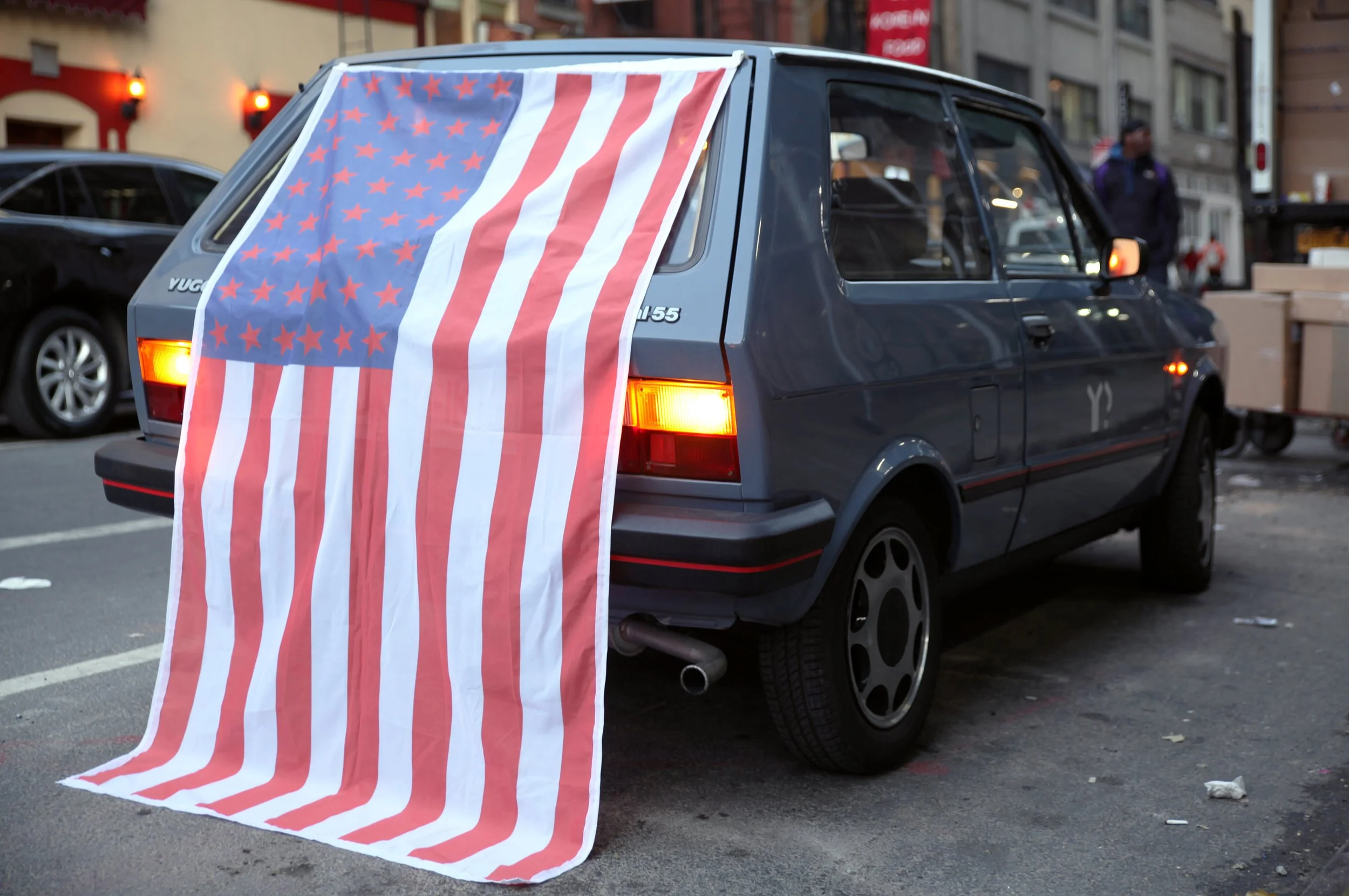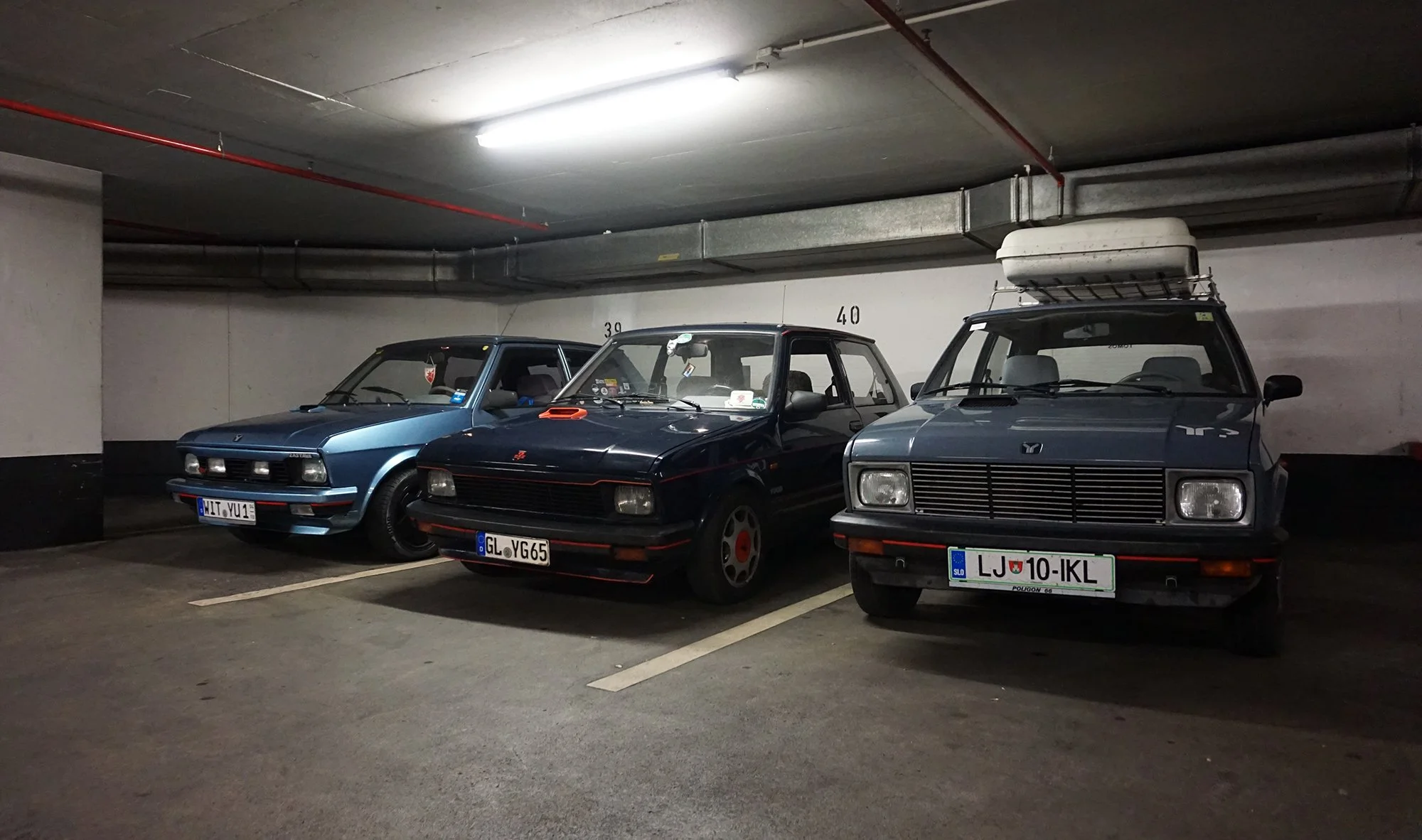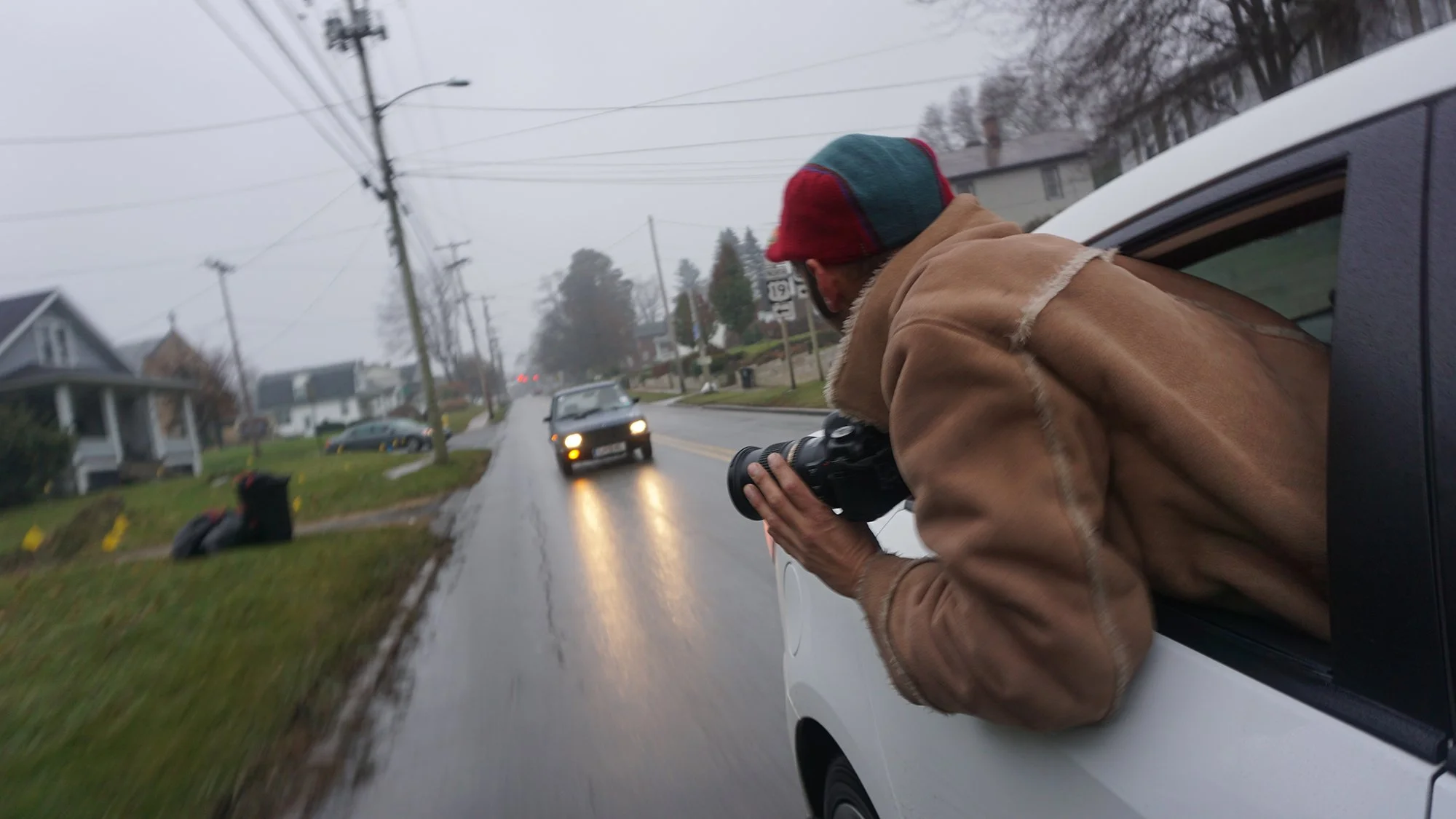Y? PROJECT
when
2019
collab with
neža knez
toni poljanec
luka erdani
production
I-Portunus
Ministry of culture RS
Municipality of Ljubljana
form
documentarism
research
public intervention
thanks
all the people mentioned
in the movie credits
Y? is a multifaceted artistic-research project that focuses on collecting and recycling facts and myths related to the Jugo car (later Yugo) and the wider context opened up by this phenomenon of the Yugoslav automotive industry. The four-member team that carried out the project understands the car as a distinct symbol and bearer of the identity of a specific time period, which was the basis for developing new ideas and reflecting on the past through a modern perspective.
The story of Yugo is dynamic and dramatic. In the US, in a relatively short time, the car went from a sales hit to an object of ridicule and a parable of poor quality. On the other side of the world, in the region of the former Yugoslavia, the former peak of Yugoslav industry has become a symbol of the sentimental, socialist past and a catalyst for individual and collective memories. Today, everyone has their own view on this peculiar phenomenon that, regardless of the facts, provokes smiles and comments.
The basis of the project is telling the story of Yugo, which became famous because it was exported to the American market. More than three decades after the big hit of the Yugoslav industry, a four-member team set off on a 44 days long trip starting from Kragujevac, the hometown of the former Crvena Zastava car factory, with a Yugo 55 purchased just for this purpose. The journey continued across continental Europe to England and on across the ocean, through New York, to Mercer, Pennsylvania, where the car was sold. Along the way, we met individuals connected to the operation of the former factory, current owners and fans of Yugo cars, theorists and artists who understand the Yugo as a symbol of a specific time.
The trip simultaneously represented the process of exporting the car to the USA, the filming of an experimental documentary film, and the establishment of an open creative platform. The trip also served as a basis for active artistic interventions in public spaces in Europe and the United States. The interventions were playing with symbols related to the Yugo story as well as confronting the context of this car with current political topics. Interventions created between political and poetic aspects combine site-specific, guerilla approach, technical simplicity, and symbolic charge.
INTERVENTIONS
With the disappearance of the country it was named after, the car somehow lost its identity. Through a series of photographs taken along the way, we symbolically searched for the lost combinations. Photos show 23 combinations that can be made out from the letters Y, U, G and O. The last, the 24th combination, which would read YUGO, was deliberately omitted from the series.
The flags of both former Yugoslavia and the USA contain the same colors – red, white and blue. Through a series of six videos, we used all possible combinations of these colors, interpreted in the form of a tricolor. Through this, a symbolic connection between the two countries was established on a poetic level.
On the border crossings of all countries, through which we passed on the way to England, we covered one of the twelve yellow stars on the sign of the European Union with a red star – a symbol of communism and one of the most important symbols of the former Yugoslavia. We started interventions on the border between Slovenia and Austria when we symbolically left the territory of the former Yugoslavia. The work consists of a series of five photographs.
In Brussels, we cleaned our car symbolizing the past, near the head-quarters of the European Commission. To wash the car, we used 12 yellow sponges in the shape of a five-pointed star modeled after the EU flag.
During our trip, the current topic of the general public interest was Brexit. The withdrawal of a member state from the Union can be interpreted as a possible beginning of the scenario that befell Yugoslavia, the disintegration of the community. We took part in protests in London carrying the slogan SELF-MANAGEMENT, referring to the workers’ self-management, which was implemented in factories of the former Yugoslavia. The literal meaning of the word can also be understood as the desire of Great Britain to govern the country independently, without interference from the EU.
Malcolm Bricklin, an American who was behind the export of the Yugo to the US in the 1980s, wanted to buy the Crvena Zastava car factory in the early 21st century and continue to export vehicles to the American market under the name ZMW. Although there were talks at the national level, the deal was never official, and one of the main opponents was Germany’s BMW, which threatened to sue because of the similarity of the brand name. Based on this event, we designed the ZMW logo after BMW’s. We waived a flag of this non-existent factory in front of the BMW car factory in Munich. The intervention was documented in form of photos and videos.
The star is a shape that appears both on the US and on the EU flag. Similar to the interventions at the border crossings within the European Union, we intervened on the national symbol in the USA as well. In this case, we colored the white stars from the American flag red and used this version of the flag as a performative tool. Through video and photo documentation, we confronted rural and urban US provinces, waving the described flag on an empty cornfield in Pennsylvania and downtown Manhattan in New York City.



























